Table of contents
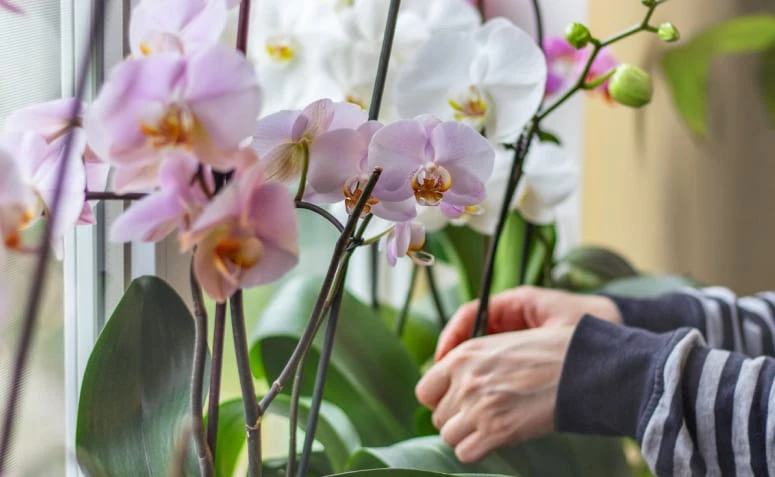
Orchids are very popular for their huge variety of species and the traditional delicacy of the flowers, but how to take care of orchids at home? Taking proper care ensures that the plant lives longer and blooms regularly, leaving the environment where it is incredible! Check out the tips below to never lose another pot:
Manual: 12 tips on how to care for orchids like a pro
It is estimated that there are about 50,000 different species of orchids, between those found in nature and those bred in laboratories. Therefore, there are many particularities among their species, but this does not mean that taking care of orchids is an impossible mission. With the tips we have selected, you will have the beautiful and healthy plants you have always dreamed of!
Don't let the light go out
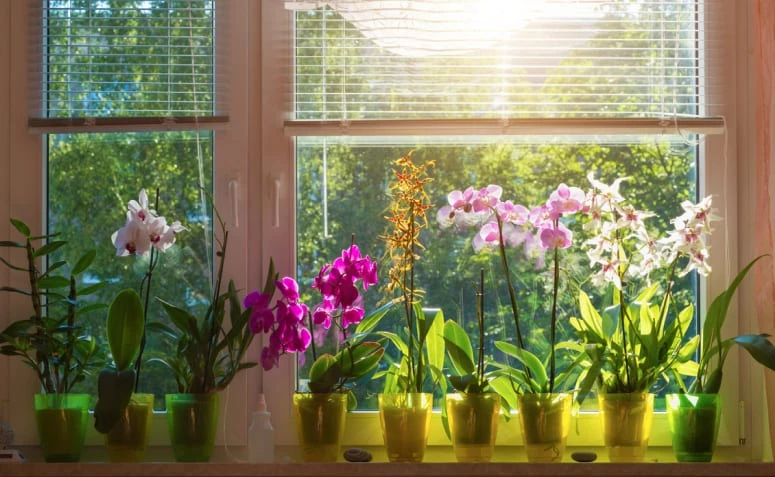
Many people believe that because they are delicate plants, orchids do not like light, but this information is not correct. Even specimens that are considered shade specimens need sunlight, even if in a smaller quantity, in order to develop fully.
Prefer to keep your orchids near windows or places where they get the early morning sun, between six and eight in the morning. You will quickly see the difference a little light makes to their health.
Choose your vase well
If you think that the pot of your orchid is just a support for the growth of the plant, you are very wrong. The model of the pot, as well as the material it is made of, has a great influence on the health of your orchid!
- Plastic vase: The plastic pot does not absorb water because it is a non-porous material, which makes it a good option for orchids that need less water.
- Ceramic vase: Unlike plastic, ceramic pot models hold more water in the plant, which allows you to water your orchid less frequently. They are heavier, but with an esthetic that dispenses the use of pots.
- Porcelain vase: As they don't usually have holes in the bottom, the water from the watering is accumulated, which can lead to rotting of the plant's roots.
- Hollow baskets: hollow baskets or vases with side openings are great options for epiphytic orchids, those that stay on trees. the plant's roots are exposed to the environment, which is perfect for aeration and root growth.
- PET bottle: a sustainable and inexpensive alternative, the bottle works as a plastic pot, so when you choose to grow orchids in PET bottles, don't forget to create holes in the bottom and sides. As we have already pointed out, the holes ensure that the substrate is aerated and without water accumulation.
Water well, but not always
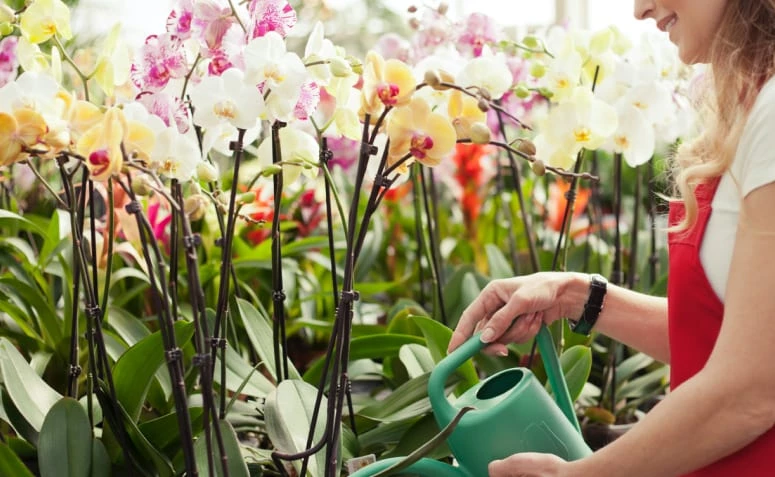
There is only one rule when it comes to watering orchids: don't overdo it. Each species needs a different frequency of watering and, considering that there are thousands of them, it is impossible to discuss the needs of each one. Besides the species, factors such as temperature and humidity of the region the plant is in will certainly influence the need for watering.
Orchids don't like their substrate to be constantly wet, so don't be afraid to let it dry out once in a while. Before watering, it is best to put the tip of your finger in the substrate. If it is dry, you can wet it; if it comes out dirty, watering can wait a little longer. Wet the plant well and wait for the substrate to dry out again.
Don't forget to fertilize
Is your orchid sad, without flowers or growth? It could be lack of fertilizer! Organic or chemical fertilizers contain substances that your plant cannot produce on its own or take up from the water, so it is up to you to serve it with a little fertilizer from time to time.
A good idea is to make a little bag using bokashi or biokashi and a porous fabric (such as used pantyhose or TNT), which you can place in the pot of your orchid.
The type of substrate matters!
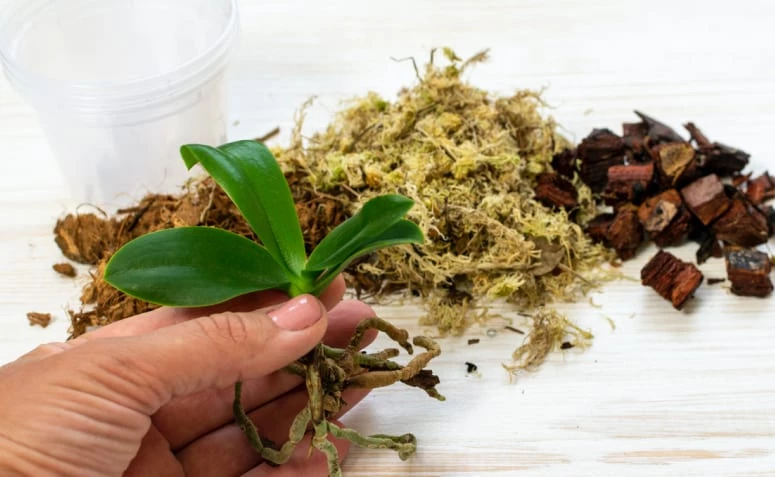
There are many options of substrates that can be used as a base for your orchid to grow, and thinking carefully about your choice is very important for the health and development of your plant.
See_also: Interlocked flooring: get to know it and how to use it in your homeThe ideal substrate allows the plant's roots to stay aerated and retains the right amount of humidity. Therefore, the choice of substrate may depend on the model of pot chosen. For example, ceramic pots hold more water, so it is more interesting that you opt for a drier substrate.
Ventilation cannot be lacking
Orchids like to have space and air circulation, so avoid leaving your plants in the middle of others or accumulated in a corner. Also avoid using air conditioning, because both the cold wind and low humidity can harm them.
Sterilize your pruning tools
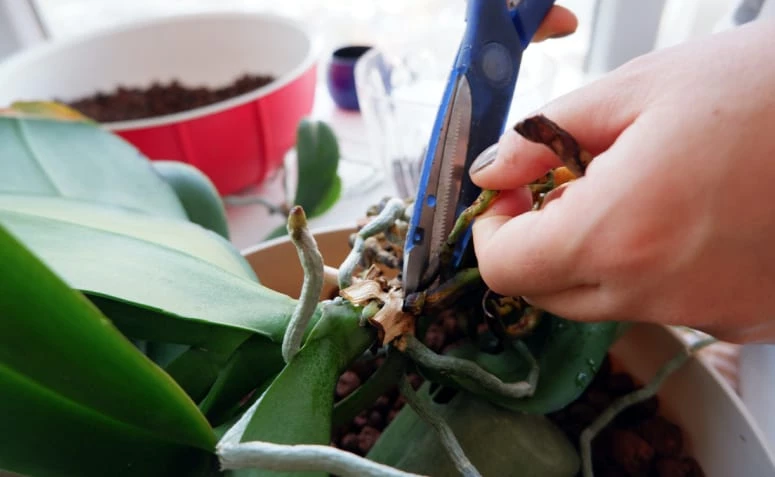
It's not only humans that need sterile products! Before pruning your plant, put the scissors or the knife that will be used on the fire and let it cool down, after which you can proceed with the pruning as normal. This process prevents possible diseases from spreading, especially when pruning more than one plant.
Cinnamon is a holy medicine
After pruning the plant or when it presents bruises on the stem or branches, sprinkle some cinnamon powder over the exposed area. The spice helps the healing of your orchid and prevents pests from taking advantage of the exposed part of your plant.
Pay attention to the color of the leaves
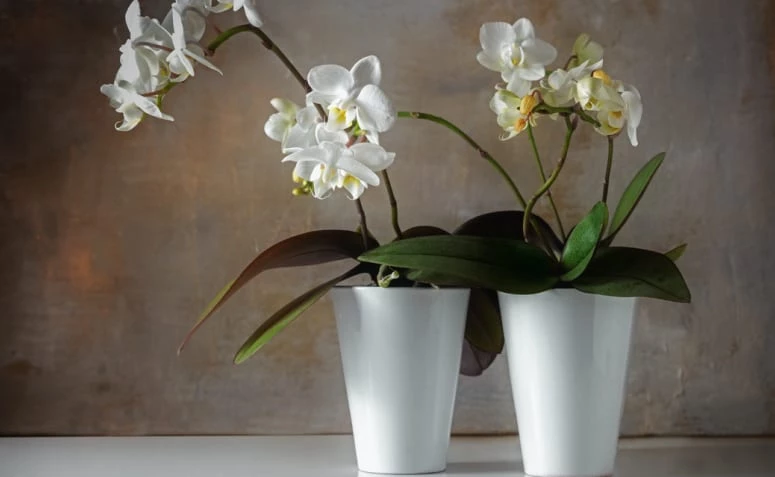
If your orchid has very dark green leaves, it is a sign that it needs more light. When the leaves appear yellowish, it is too much light: it is better to keep it in a place with less sun or for less time.
Beware of pests
The likelihood of dealing with pests varies depending on the location of your orchid - indoors or outdoors, in an apartment or house. Indoor or apartment plants are usually less exposed to slug attacks, for example, but they are not the only ones that can give you trouble.
To prevent pests, always keep an eye on the appearance of your orchid's leaves and brush the leaves with coconut soap using a toothbrush.
Don't prune for nothing
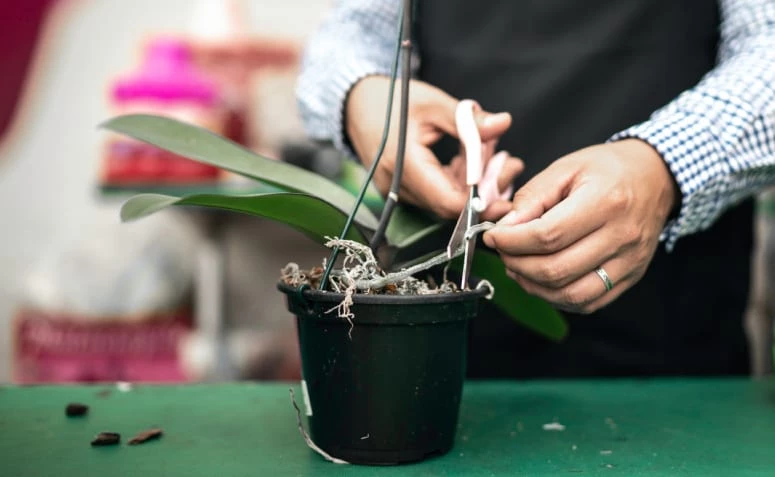
When the bloom is over, it is not necessary to do a radical pruning. The ideal is always to pay attention to the plant's reactions. For example: if the tip of the stem is dry, but the rest is green, remove only the part that the plant has already rejected.
Switching to a new pot
Eventually, your orchid will grow quite large and you will need to repot it. When that day comes, pay attention to which side your plant sprouts from. This is the "front" of the plant and it needs to be supported on one side or the other for it to grow healthily.
Orchids may be hard plants, but their beauty certainly makes any effort worthwhile, doesn't it? Check out more tips and care that you should take in order to have healthy plants.
Other orchid care
There are so many orchid species, their care and preferences that all information is very welcome. Check out the videos below for more tips on how to care for orchids:
How to repot your orchid
If you are just starting out in the world of plants, you may have questions about when and how to repot your orchid. Don't worry, this video has all the answers!
Things orchids don't like
Orchids are demanding plants, so take advantage of this video to learn about everything these little plants don't like and avoid headaches!
First Care for Young Orchids
Have you just got an orchid and don't know how to start taking care of it? This video instructs you from how to pot your new plant to what care you need to take to make it grow well.
How to save a sick orchid
Even with all the care and attention, your orchid may need a little help eventually. If that time comes, there's no need to worry: this video gives great tips on how to react and solve any problem your little plant may have.
The charm of these flowers makes anyone fall in love, doesn't it? Soon your corner will be full of blooming and healthy orchids. If you like plants and live in a building, enjoy these apartment plant ideas!
See_also: How to choose the right glass door for your home

